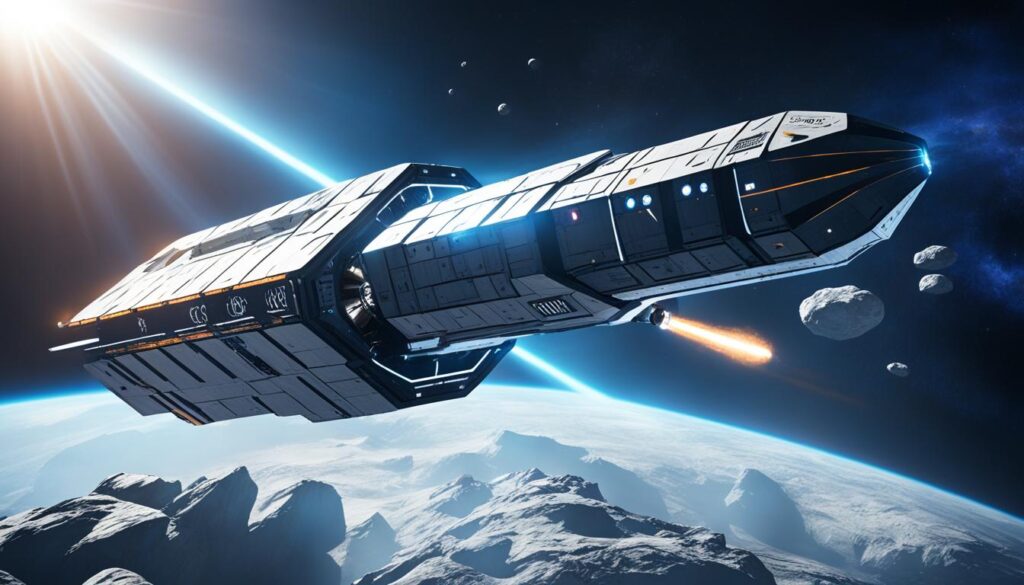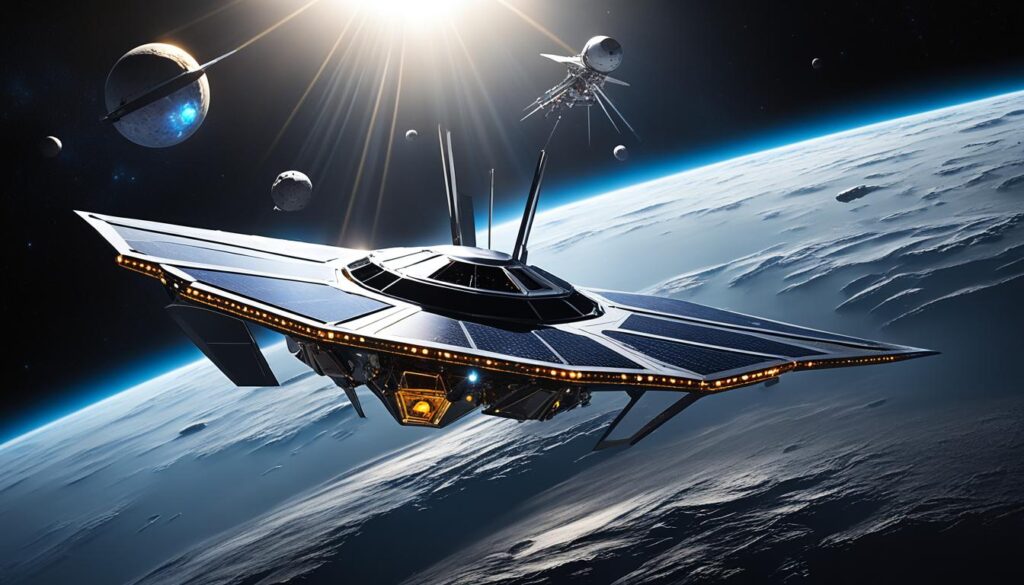As humanity delves deeper into the cosmos, the challenges we encounter grow more complex. From optimizing cargo handling to arranging spacecraft at docking ports, the possibilities are vast, exceeding the number of atoms in the visible universe. Yet, the emergence of cutting-edge technology like quantum computing is set to transform our approach to these complex problems. This technology is opening doors to a future beyond Earth.
NASA, in partnership with commercial and international entities, is gearing up for a new era of sustainable human spaceflight and exploration. The International Space Station, a hub for 71 crews over two decades, remains the pinnacle of research and technology development. Its operational speed of 17,500 miles per hour sets the stage for groundbreaking advancements in fields like quantum computing.
Looking ahead, the fusion of quantum computing with space exploration heralds a new era of possibilities. Google has developed a quantum computer vastly faster than the fastest supercomputer, while D-Wave Systems employs quantum computers for tasks like optimizing routes and scheduling. Such technology could revolutionize problem-solving in space, solving complex issues in seconds that traditional supercomputers would take years to address.
NASA’s Vision for the Future of Space Exploration
For over half a century, NASA has led space exploration, expanding human knowledge and technological prowess. The agency’s future vision includes returning to the Moon and using it to explore Mars and beyond. This ambitious goal is rooted in a deep understanding of space and the capabilities needed to achieve it.

NASA’s efforts are built on a solid foundation of international partnerships, exemplified by the International Space Station. This station, operated by five space agencies from 15 countries, demonstrates the effectiveness of global cooperation in space exploration. Such partnerships are crucial for the success of future missions.
The Artemis program is a cornerstone of NASA’s lunar exploration strategy. It aims to establish a sustainable human presence on the Moon. This program, supported by the Artemis Accords signed by two dozen countries, will mark a historic milestone with the first woman and next man landing on the Moon. Key elements of this program include:
- The Space Launch System (SLS), the most powerful rocket ever built
- The Orion spacecraft, designed to carry astronauts to deep space destinations
- The Gateway lunar command module, serving as a staging point for missions to the Moon and beyond
With the Gateway in lunar orbit, NASA and its partners will explore more of the Moon’s surface than ever. This endeavor will provide invaluable lessons and technologies for future Mars missions. It’s a critical step in establishing a sustained human presence in space.
Commercial companies will also play a vital role in the future of space exploration. They will be responsible for launching rockets, satellites, and transporting cargo and crew. This will allow NASA to focus on deep space missions, leveraging the strengths of both government and private sectors.
The technologies and missions developed by NASA will have significant benefits for life on Earth. Advances in medicine, materials science, and our understanding of the universe will transform our world. The future of space exploration holds immense potential for improving life on our planet.
The Role of Emerging Technologies in Space Exploration
Emerging technologies are transforming space exploration, offering new avenues for scientific breakthroughs and advancements. Quantum technology stands out, promising to revolutionize our approach to space missions and communication.

Quantum sensors can measure time with an accuracy of a few billionths of a second, crucial for pinpointing positions in space. They detect subtle changes in gravity, magnetic fields, and temperature with unmatched sensitivity. This precision is vital for experiments and data collection in space’s extreme conditions.
Quantum technology also excels in secure communication. Quantum key distribution uses quantum entanglement to send encrypted data, keeping it secure even if intercepted. China has showcased this with the Micius satellite, establishing quantum communication between satellites and Earth.
Quantum metrology, using entangled photons, could vastly improve space telescope resolution. This would enable clearer images of exoplanets and deeper insights into the universe’s origins. New quantum detectors and strategies will enable experiments currently impossible or prohibitively expensive on Earth.
Quantum computing is another transformative technology for space exploration. Quantum computers, with their qubits in multiple states at once, can solve complex problems at unprecedented speeds. This could optimize space mission routes, cut down travel times and fuel, and simulate quantum systems for deeper insights into extreme matter and energy.
Collaboration is key to unlocking quantum technology’s potential in space. Organizations like QTSPACE host workshops and conferences, engaging hundreds of scientists. The Quantum Space Network aims to unite stakeholders for funding and research on quantum technology in Europe.
As we venture deeper into space, technologies like quantum sensing, communication, and computing will be vital. They will open new frontiers and deepen our understanding of the universe. By embracing these advanced tools, we’re setting the stage for groundbreaking discoveries in space science.
Collaboration and Competition in the New Space Era
The global space industry is booming, with over 2,660 satellites launched last year and more than 70 countries showing off their space skills. This growth highlights the need for international cooperation and clear rules. Competition, like SpaceX’s dominance in U.S. launches, can spur innovation. Yet, fair rules are vital for sustainable space exploration.
NASA and the European Space Agency believe in working together, with most science missions being joint efforts. But, countries like China and Russia might prefer to go it alone. This underlines the need for common space regulations. The National Space Strategy, adopted in March 2018, champions peace through strength in space and balances national security, commercial, and civil space activities.
Space debris and old satellites are major problems, with hundreds of thousands of pieces that could harm spacecraft. These hazards can damage equipment and pose risks to astronauts during spacewalks. Setting rules for satellite disposal and tracking systems is crucial, though it may be costly.
The United States Space Force (USSF) is all about organizing, training, and equipping forces to support various commands. It ensures the U.S. and its allies have access to space. The USSF is key to the National Space Strategy, aiming to strengthen deterrence and combat options in space against rivals.
The U.S. is working to make space exploration easier by simplifying regulations for its commercial sector. It’s also engaging with other countries for joint growth and tackling threats together. The Space Policy Directive 1, signed in December 2017, guides an innovative and sustainable space program with partners, paving the way for human expansion in the solar system.
As the space industry grows, the balance between collaboration and competition will define its future. Setting clear rules for space exploration, satellite decommissioning, and managing space debris is essential. This will ensure a sustainable and thriving space era ahead.
Quantum Computing Powered Space Station
The fusion of quantum computing with space stations marks a pivotal shift, offering immense potential for complex problem-solving and technological advancement. NASA, in partnership with top universities and private entities, leads this transformative journey. The upcoming launch of the Space Entanglement and Annealing QUantum Experiment (SEAQUE) to the International Space Station heralds a new era in secure quantum communications in space.
Quantum computers boast the capability to process information exponentially faster than traditional machines, opening up new avenues for research. By leveraging quantum computing in space, scientists can undertake experiments and simulations inaccessible on Earth due to microgravity’s unique properties. This technology is set to revolutionize fields like biomedical science, material science, and advanced technology, leading to groundbreaking discoveries in drug development, disease treatment, and material creation.
SEAQUE aims to establish secure quantum connections over vast distances, a foundational step towards a global quantum network. The project unites experts from the University of Illinois Urbana-Champaign, the University of Waterloo, the National University of Singapore, AdvR, Inc., Nanoracks, and NASA’s Jet Propulsion Laboratory (JPL). This collaboration underscores the significance of global cooperation in advancing quantum computing in space.
The technology demonstration will utilize an innovative integrated source of entangled photons via a waveguide, a first for spacecraft. This method is more efficient and resilient than earlier bulk optic sources. SEAQUE’s optics ensure alignment without manual intervention, a crucial feature for a scalable quantum network. The project also seeks to repair radiation-induced detector array damage using a bright laser, potentially extending the lifespan of quantum nodes in space.
China’s Micius satellite and experiments on the ISS have set the stage for future space-based quantum systems. Private entities like Axiom Space, in collaboration with Kepler Communications and Skyloom Global, are developing orbital data centers for quantum computing applications. The creation of quantum repeaters and processors in space will facilitate secure global quantum communication networks, enhancing data privacy and security. Moreover, Quantum Key Distribution (QKD) in space ensures secure communication channels, vital for cybersecurity in a connected world.
The integration of quantum computing with space stations not only promises to redefine complex problem-solving but also enhances Earth observation systems. Quantum-enhanced sensors and processors in space will improve climate change monitoring and disaster response accuracy and speed. As we venture deeper into space exploration, quantum computing will be crucial in unlocking new frontiers and addressing future challenges.
Addressing the Challenges of Space Debris and Sustainability
The global space market is booming, expected to hit over $700 billion by 2030. Yet, this growth raises concerns about space debris and sustainability. Currently, 95% of objects in Earth’s orbit are considered debris, with about 10,000 metric tons floating around. This debris is a threat to operational satellites and spacecraft, even small pieces can cause significant damage due to their high speeds in low Earth orbit (LEO).
NASA and other entities are tackling these issues with research and initiatives. They’ve awarded over $177,000 for debris mitigation projects, like analyzing policy for lunar orbit debris and incentivizing orbital cleanup. A $120,000 prize is also up for grabs for solutions to detect and remove small space debris.
International cooperation and setting rules for satellite disposal are key to managing space debris. The United Nations Committee on the Peaceful Uses of Outer Space, with 102 member countries, is pushing for global space cooperation. They aim to set standards for outer space security and sustainability. With NASA’s Artemis program and SpaceX launching more satellites, it’s vital we work together to reduce space debris and ensure space activities are sustainable.
